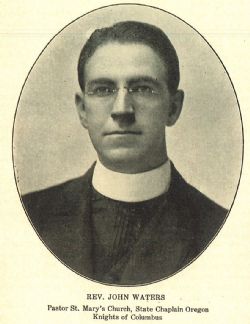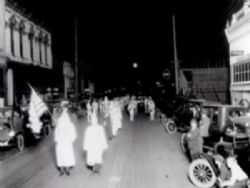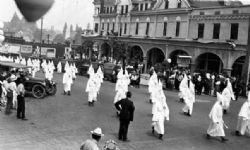First State Officers
State Deputy Dr Ben Norden
State Secretary John Ryan
State Treasurer William O'Brien
State Advocate Charles Murphy
State Warden Hugh McLain
State Chaplain Rev. John Waters
First State Officers
State Deputy Dr Ben Norden
State Secretary John Ryan
State Treasurer William O'Brien
State Advocate Charles Murphy
State Warden Hugh McLain
State Chaplain Rev. John Waters
.jpg)
Dr. Benjamin Louis Norden
1st State Deputy of Oregon 1908-1910
Benjamin Louis Norden was the only son of Benjamin and Mary and born in 1879 in Portland, OR.
He was qualified both in Law and in Medicine. Dr. Norden was intern and house surgeon at St. Vincent's hospital in 1907 and 1908, and took post-graduate work at the New York Post-Graduate hospital and Polyclinic hospital. He won a law degree in 1915. He was elected coroner in 1908 and again in 1910. During World War I he was a surgeon in the navy aboard the U. S. S. South Dakota. After the armistice, he served on the U. S. S. Aeolus, in the transport service between Virginia and France. In 1921 he returned to Portland, and private practice. He was local coroner. Unlike his father who was an active Democrat, Ben Junior was a Republican.
Dr. Norden never married and made his home with his sister, Frances Norden, at 2134 N.W. Flanders Street.
He was a member of the Multnomah medical society, Knights of Columbus, Elks, Royal Arcanum, Multnomah post, American Legion, and Alpha Kappa Kappa medical fraternity.
Dr. Norden was the third Grand Knight of the Portland Council #678 from 1906-1907
Dr. Norden became Territorial Deputy with the advent of the Order into Oregon, June 15, 1902 and served in until the establishment of the State Council, May 11, 1909 when he was elected 1st State Deputy at the First State Convention at the K of C Club room at the Portland Council #678. He gave a brief but enthusiastic speech thanking the four attending councils of Portland, Baker City, Astoria and Coos Bay. Under Dr. Norden’s administration, the order made rapid progress and advanced to a strong position, having secured the membership of a long list of the most prominent Catholic men in Oregon.
Dr. Norden continued to work within two weeks of his death when he died at the home of his sister Frances of acute coronary thrombosis. Dr. Ben L. Norden died October 19, 1951 at the age of 72. He is buried at the River View Cemetery in Portland, OR. Apparently the name Norden, in Oregon, died with him.

Rev. John Francis Andrew Waters
John Francis Andrew Waters was born January 10, 1878 in St. Louis, MO. He came to Portland as a boy with his parents, John and Margaret Lemery Waters. After receiving his early education, he entered St. Mary’s seminary in Baltimore MD. John Waters was one of the youngest priests to be ordained when he entered into the priesthood in 1900. After his ordination, he came directly to Astoria, serving as priest for 30 years. In 1933, Rev. Waters went to St. Mary’s in Albany. He returned to Astoria a few years later.
Rev. Waters was widely known and active member of the Astoria community for many years during his service for the local parish. When he began his services, Astoria was a wide-open town of brothels and saloons and was notorious all along the Pacific coast. Rev. Waters led the repression of the brothels and reduction in the number of saloons.
Rev. Waters helped to establish Columbus Day as an Oregon State Holiday. “As the Knights will probably observe the day formally, I wish to suggest that a religious function, in addition to the civil ceremonies, mark the occasion each year.” Rev. Waters May 9, 1911 Astoria, OR
Rev. Waters celebrated the 50th anniversary of his ordination as a priest in December 1950. An extensive celebration was held in Astoria for the 50th anniversary of his ordination. Bishop Francis Leipsiz of the Baker diocese conducted the mass.
Later in life, Rev. Waters was ill for several years and died March 4, 1954. He was survived by his two brother, William B. Waters, Portland, and Dr. Joseph T. Waters, Los Angeles. He is buried at Mount Calvary Cemetery in Portland, OR.

|
May 11- The annual grand council of the Knights of Columbus convened In this city ; yesterday at West Park and Taylor streets at the headquarters of Portland council. W. P. O'Brien, of Astoria, state deputy, presided. .The reports showed over 1500 members in Oregon in l different local councils, with a rapidly Increasing membership. Archbishop Christie and M. G. Leahey. fourth degree master, of rapidly Increasing membership. Archbishop Christie and M. G. Leahey. fourth degree master, of Seattle, addressed the counciL - The next annual convention will be held In Portland In May, 1916. The following officers for the ensuing term were elected: William Barrett, of Albany, state deputy; A. A. Mlckel, of Albany, state secretary: M. S. Donahue, state treasurer: Hugh McLaine, II E Up to Five Years Ago Was Owner of Pillar Rock Can1 nery, John T. M. Harrington. ; John T. M. Harrington,
https://www.newspapers.com/newspage/78426393/

In the early 1920s, Oregon, with a population of only 700,000 and an agriculture- and timber-based economy, seemed far removed from the unrest that buffeted other parts of the United States in the wake of the First World War.
Read about the KofC vs KKK in an article published by Faith Patterns
Dec 2, 2014
Photo: In 1922 the virulently anti-Catholic Ku Klux Klan was a powerful force in the Pacific Northwest as seen here in this photo of Klan members parading in the Southern Oregon town of Ashland.

